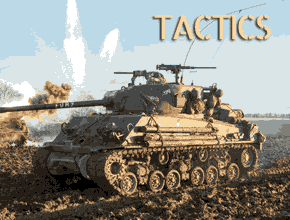The T17E1 Staghound was on in the long line of "hounds" which were manufactured in WW2, most often in small series of evaluation prototypes. The obnly one that was mass-pdoduced became the M8 Greyhound. The alternative T17E1 Staghound, which lost the contract, was however still produced to cover the needs in armored car of the Allies during World War II. This was a Ford alternative for for reconnaissance and patrol, based on a British requirement, eventually produced by the Ford Motor Company from 1942 to 1944 and mainly used by Britain.

The T17E1 was armed with a 37mm M6 gun in turret, providing it with the capability to engage light armored vehicles and infantry. It also had a coaxial .30 caliber Browning machine gun and another .30 caliber machine gun in the hull. It featured sloped armor for increased protection, had a top speed of around 55 mph (88 km/h) making it relatively fast for its time in a 4x4 wheel configuration, enhancing off-road capabilities. The T17E2 tested the M8 Scott 3-in Howitzer gun turret for support but was never produced, and other conversion proposals were made. All were were equipped with radio equipment but the command variants had a dummy gun and the extra space filled by a longer range radio set. They saw action with Commonwealth and British Empire forces as well as Australia, Canada and Belgium, albeit many were sold postwar to other countries. They saw action from the end of the North African campaign, soldiered in Italy, and Northwestern Europe until V-Day.
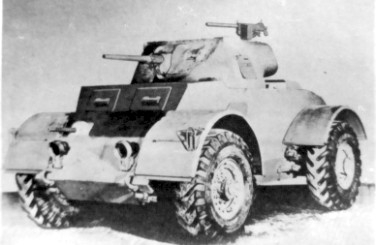
Postwar, surplus Staghounds were exported and saw action in different conflicts, remaining in service for many more years, notably in South America until recenbtly. Many were also used for internal security duties. The T17E1 Staghound proved a solid and probably more sturdy alternative to the M8 Greyhound. It was a versatile armored car providing reconnaissance and fire support capabilities to Allied forces during the war and beyond, combining ease of maintenance and reliability, speed, firepower, and mobility championed on the battlefield.
The British choosed the name Staghound for this T17E series. Commission's liaison officers worked with Macpherson, the engineer in charge of the project and believed that hs would meet all their requirements. By December 1941 the British Purchasing Commission "formally requested" an order for 300 vehicles, later confirmed by March 1942 and the US Army authorized 2,000 by January 1942. The pilot T17E was delivered to the Aberdeen Proving Ground and tested. These showed some issues that could be fixed so on top of the Breitish order, 1,500 more were contracted for.
Production started in October 1942 at Chevrolet. The US Army in between had a board selecting just one of the many armored car projects tested at the time, and precoignised by December 1942 a lighter vehicle, and the cancellation of all others (The M8 Greyhound) leaving only the British interested for the T17E1 production, the commission even proposed to have it built only for the United Kingdom under Lend-Lease. After Chevrolet secured this, amidst other possible requisitions, the Staghoind became a unique case of a US mass produced vehicle still named after it's "T" reserved for pilots, and not standardized. In total 3,844 Staghounds were produced until late 1944. It was less urgently needed after the African campaign was won, and still useful in Italy but already less in northern Europe due to the wetter, muddier climate.
The crew comprised 5 men: The driver and co-driver seating in the forward cabin, driver to the left, co-driver to the right. The latter could activate a M1919 Browning LMG through a ball mount in an encased cast protrusion on the noze glacis. Both had a overhead access hatch, forward folding clear of obstructions but the gun above, and the driver had a rotating sight on his larger hatch. If the vehicle was overturned, there was also a small belly hatch under their feet. They also had both a folding shutter forward with addon central flap and sight slit.

Then came the central combat compartment hoising the remaining three men. One was the commander, in the original Mark I cast turret, which could stand to the forward right of the turret in a higher position, side-opening hatch. The radio set was immediately behind him in the turret pannier with its whip antenna. He also had a rotating sight forward. A light projector was located on the pintle forward center, right hand. Next on the right was the gunner/loader position with a smaller, simpler outwards-opening hatch. He had also a rotating episcope, and at his right a side mounted M1919 Browning LMG pintle mount.
Then at the rear came the engine compartment, with a group of three main radiator vents for the engines, whoch could be accessed through two large outwards folding panels. The engines exhausted at the rear with down directed pipes to make their flames less visible. There were also two side access hatches forward of the hull into the main compartment, sandwiched between the forward mudguards and side storage bins and oil barrels. The entire hull was festooned with useful straps and attachement points for tooling equipments and haversacks. Being autonomous, these recce units needed to carry everything on their back.
The Staghound was an innovative design incorporating some advanced features. Its two rear-facing 6-cylinder GMC 270 engines rated for 97 hp (72 kW) each (194 hp combined) for a power/weight of 13.9 hp/tonne, coupled to an automatic transmission with four forward and one reverse gears. It was feeding through a transfer case, driving both axles. Thus, the driver depending on the terrain could select a two or four-wheel drive.
Either engine also could be shut down while underway and completely disconnected of the drive train. This made the whole package redundant and "battle proof". There was also a power steering pump, incorporated to be switched on or off. It could be done manually from the driver's panel and activated each time encountering an adverse terrain condition. The steering and suspension components were directly attached to the hull as well. The latter was indeed sturdy enough, making the design a monocorps, not a separate strenght chassis with and add-on armoured body. This assimilation of structure and protection made them easier to produce while being lighter and more rugged and efficient for their power-to-weight ratio.
The hull sides were not flat but sloped in an inverted way. The glacis nose, rear panel were flat and the original, initial cast turret in single piece had a gradual thickness, 44 mm forward and down to 9 mm at the rear and roof. The turret ring bearing were quite strong and proved later able to mount tank turrets, with better guns, such as the Mark II and Mark III with late Crusader turrets (6-pdr or 57 mm/2.24 in AT gun and even 17-pounder (75 mm) on the Mark III). In that case, the turrets were 8-faceted and bolted, but only offered protection forward.

Staghound AA, armed with two 0.5 Browning HMG, less useful than the T19 quad arrangement buty the good sight and quick revolving turret were useful.

Canadian Staghound with a set of two rockets mounted under a left gimble, quite useful for support, but inaccurate against armoured vehicles.

Late Mattress rocket variant used for tests

T17E3 variant

Top to bottom, left-right: Mark I, II(CS), III (early/late), Command, AA (T17E2), support (T17E3).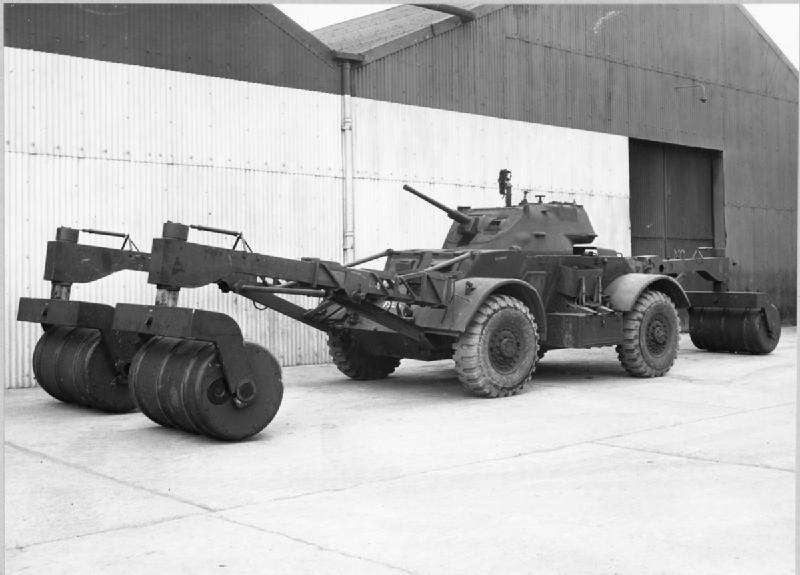
A minesweeper variant (field conversion) with Lulu electric mine detectinbg equipment from Sherman tanks conversions, suspended and mobile rollers forward and aft (pair forward, single aft). The AMRCR (anti-mine reconnaissance castor roller) variant was also tested but not adopted.
Close support (CS) variant with a low pressure 3 inch howitzer Mk 1 (75 mm) mm to fire smoke rounds or HE for cover in HQ sections. Only limited conversions, no bow MG.
There were actually three variants of the latter, using various turrets. The first was adapted to carry a Crusader tank turret, armed with Ordnance QF 6 pounder gun, 7.92 mm Besa coaxial. This version was most intended for close support with HE shells. The late variant was given the Ordnance QF 75 mm gun with more efficient HE projectile. They were not intended to deal with armour. No bow machine gun. Conversions made in UK ready only in 1945, sent to heavy troops of armored car regiments. The third variant adopted a 75 mm AEC turret and was popular on exports postwar notably with Denmark. Numbers are unknown, c300 at best.
Thus turret-less T17E1 fitted with a Frazer-Nash-designed turret mounting two .50 M2 Browning heavy machine guns. US models spared from British Motor Torpedo Boats stocks. 2,610 rounds carried. Electric-hydraulic traverse, 55°/second. Crew commander/gunner, loader, 789 built October 1943 to April 1944.
T17E1 prototype fitted with the 75 mm Howitzer Motor Carriage M8 (Scott) and its short barrel 75mm M2/M3 howitzer. Tested in December 1943 but not adopted.
The Staghounds entered service too late for the North African Campaign where its combination of armor, range and main armament would have been an advantage in their reconnaissance missions. Still, they started service in Italy, less advantageous due to the cluttered, mountaineous terrain and slower pace of operations. In fact units in the field, notably Canadians and Poles, found its large size a problem in Italy's narrow roads and streets.
Tactically, Staghounds were distributed at squadron and regimental headquarter level. Each armored car regiment was given three Staghounds. A higher level Regimental HQ had three for four squadrons in the regiment plus a command variant. Conditions improved when the Italian campaign became more mobile by mid-1944. After D-Day, these were found more at ease in the open plains of north-west Europe, especially as combat was more fluid after the falais pocket breakthrough. They soldiered on with the Brits, Belgians, Canadians, New Zealanders, Poles, Indians, until V-Day in German and northern Italy. But they saw no combat in the Far seat however.

The cold war did not signed the end of this rugged model. Staghounds were distributed among smaller NATO countries in Europe and later resold to Middle East nations. Mk I and Mk III (the latter with the late 17-pdr and Challenger turrets) saw action as late as the 1980s Lebanese Civil War by both side, Christian and Muslim militias. The Staghound variant was modified by the Swiss with modern armament packages. They had notably the latest Swiss 30mm and 47mm anti-tank guns and were marketed -without sucess- as an upgrade package to Syria, which still had many in inventory. Given their large distribution across the globe they saw plenty of action.

The Belgian Staghounds were the product of a reconstituted free Belgian unit in Britain. This was the Independent Belgian Brigade, later better known as the "Brigade Piron" from the name of its commander, J.B. Piron. The unit was constituted as the first free Belgian armoured unit since 1940, from January 1943, combining Dutch-speaking Flemish and French speaking walloons which managed to flee Belgium to UK. It reach at its peak in late 1945sime 2,200 officers and men. They took part notably in Operation Paddle after D-Day, the liberation of Belgium and the Netherlands as well as the northern push into Germany.
The Brigade Piron was mostly equipped with the Staghound. However they were not particulary popular. They were found too heavy, power steering and automatic gearboxes were unknown to drivers which needed extra training (The Belgians prior to this used smaller Daimler ACs) and the twin engine configuration was found too finnicky as they needed to be perfectly tuned at all times. Also the configuration of the turret pannier blocked the driver's exit if jammed reversed.
In August 1944 when at its peak, for its most important operation, the Brigade Piron comprised a Staff with a British Liaison officer, the 1st, 2nd and 3rd Motorised companies each with rifle platoons reinforced by mortar, machine gun, anti-tank and anti-aircraft platoons. But its meaty bulk was formed by the Armoured Car Squadron made of 4 units, equipped each with a mixture of Daimler Dingo, Staghound Mk.I and T17E1 AA variant, and a supply and recovery squadron. They were supported by an artillery Battery with twelve 25 pdr gun-howitzers organised into 3 troops (one Luxembourgish), an Engineers, Transport company, a repair Detachment and a Medical Unit.
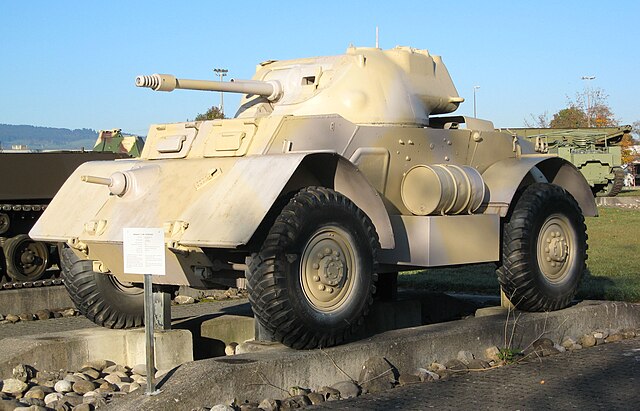
The Swiss created their own variant of the type, even two, the Radpanzer Staghound with the main gun replaced by a Swiss 47 mm Pak 41 gun and the "Staghound mit Versuchswaffen" with a Swiss bow machine gun and Hispano-Suiza HS.820 automatic cannon in turret. Prototype only but proposed as an upgrade on the international market.
The Lebanese case wa sinteresting also. Some of these had their armament replaced by a British Ordnance QF 2 pdr, 7.92 mm Besa LMG. Others had the turret replaced with that of a 75 mm gun-armed AEC armoured car. Passed on in 1976 to the Army of Free Lebanon, Lebanese Arab Army, Tigers Militia, Kataeb Regulatory Forces, Lebanese Forces, Al-Mourabitoun, Arab Socialist Union, People's Liberation Army. Australia. Unknown numbers.
Australia. Unknown numbers.
 Belgium: Remaining from the brigade Piron +c50 donated postwar, later in the Belgian Gendarmerie for 30 years.
Belgium: Remaining from the brigade Piron +c50 donated postwar, later in the Belgian Gendarmerie for 30 years.
 Brazil: Unknown numbers.
Brazil: Unknown numbers.
 Canada: Used in WW2, Discarded 1950s
Canada: Used in WW2, Discarded 1950s
 Cuba: 28 ex-Israeli T-17E1s purchased from Nicaragua 1956.
Cuba: 28 ex-Israeli T-17E1s purchased from Nicaragua 1956.
 Denmark:14 Mark III active 1946-1953
Denmark:14 Mark III active 1946-1953
 Egypt: 50 allegedly in servcie in the Egyptian Army 1948.
Egypt: 50 allegedly in servcie in the Egyptian Army 1948.
 Greece: A few WW-II leftover.
Greece: A few WW-II leftover.
 Honduras: Active until the 1990s
Honduras: Active until the 1990s
 India: Unknown numbers used in WW2 Italy.
India: Unknown numbers used in WW2 Italy.
 Israel: 112 in service 1940-50s.
Israel: 112 in service 1940-50s.
 Italy: Carabinieri, Italian Army/Polizia di Stato until 1970.
Italy: Carabinieri, Italian Army/Polizia di Stato until 1970.
 Jordan: Unknown leftover from WW2.
Jordan: Unknown leftover from WW2.
 Lebanon: 56 in service, regular Lebanese Army & ISF 1949-1983.
Lebanon: 56 in service, regular Lebanese Army & ISF 1949-1983.
 Netherlands: Unknown numbers, active in the far east.
Netherlands: Unknown numbers, active in the far east.
 New Zealand: Used in WW2, unknown numbers.
New Zealand: Used in WW2, unknown numbers.
 Nicaragua: 40 T-17E1 from Israel after the Suez war. 20 resold to Cuba in 1957. 18 in service with the National Guard 1957-1979.
Nicaragua: 40 T-17E1 from Israel after the Suez war. 20 resold to Cuba in 1957. 18 in service with the National Guard 1957-1979.
 Poland: Ued in WW2. Returned 1947.
Poland: Ued in WW2. Returned 1947.
 Southern Rhodesia: 20 with the Rhodesian Army 1949-1976.
Southern Rhodesia: 20 with the Rhodesian Army 1949-1976.
 Saudi Arabia: Unknown.
Saudi Arabia: Unknown.
 South Africa: 450x T-17E1
South Africa: 450x T-17E1
 Sudan: Unknown numbers.
Sudan: Unknown numbers.
 Switzerland: Some tested and converted;
Switzerland: Some tested and converted;
 Syria: 52 in service.
Syria: 52 in service.
 Thailand: Unknown.
Thailand: Unknown.
 South Vietnam: Army of the Republic of Vietnam, Provisional Revolutionary Government of the Republic of South Vietnam.
South Vietnam: Army of the Republic of Vietnam, Provisional Revolutionary Government of the Republic of South Vietnam.

The T17E1 was armed with a 37mm M6 gun in turret, providing it with the capability to engage light armored vehicles and infantry. It also had a coaxial .30 caliber Browning machine gun and another .30 caliber machine gun in the hull. It featured sloped armor for increased protection, had a top speed of around 55 mph (88 km/h) making it relatively fast for its time in a 4x4 wheel configuration, enhancing off-road capabilities. The T17E2 tested the M8 Scott 3-in Howitzer gun turret for support but was never produced, and other conversion proposals were made. All were were equipped with radio equipment but the command variants had a dummy gun and the extra space filled by a longer range radio set. They saw action with Commonwealth and British Empire forces as well as Australia, Canada and Belgium, albeit many were sold postwar to other countries. They saw action from the end of the North African campaign, soldiered in Italy, and Northwestern Europe until V-Day.
Postwar, surplus Staghounds were exported and saw action in different conflicts, remaining in service for many more years, notably in South America until recenbtly. Many were also used for internal security duties. The T17E1 Staghound proved a solid and probably more sturdy alternative to the M8 Greyhound. It was a versatile armored car providing reconnaissance and fire support capabilities to Allied forces during the war and beyond, combining ease of maintenance and reliability, speed, firepower, and mobility championed on the battlefield.
Development
In July 1941, the U.S. Army Ordnance issued specifications for a medium armored car, alongside a specification for heavy armored car that resulted in the T18 Boarhound. The Ford Motor Company built several prototypes, such as a six driven wheels (6 x 6) prototype T17 but Chevrolet proposed a 4 x 4 model designated T17E1. As it happened, the British Purchasing Commission in the US was looking for medium and heavy armored cars notably to fight in North Africa, where wheeled vehicles were better suited British requirements. The T17 and T17E used the same cast turret from Rock Island Arsenal. The latter answered British requirements which proposed a crew of crew inside, plus a radio close to the commander. Eventually the Greyhound (later standardized as the M8) was adopted. If the US instead would have adopted the T17E1, it would have been standardized as the M6. In fact the T17 Deerhound was later an experimental derivative of the M8 Greyhound mounting the same cast turret instead of the open one on the T20.The British choosed the name Staghound for this T17E series. Commission's liaison officers worked with Macpherson, the engineer in charge of the project and believed that hs would meet all their requirements. By December 1941 the British Purchasing Commission "formally requested" an order for 300 vehicles, later confirmed by March 1942 and the US Army authorized 2,000 by January 1942. The pilot T17E was delivered to the Aberdeen Proving Ground and tested. These showed some issues that could be fixed so on top of the Breitish order, 1,500 more were contracted for.
Production started in October 1942 at Chevrolet. The US Army in between had a board selecting just one of the many armored car projects tested at the time, and precoignised by December 1942 a lighter vehicle, and the cancellation of all others (The M8 Greyhound) leaving only the British interested for the T17E1 production, the commission even proposed to have it built only for the United Kingdom under Lend-Lease. After Chevrolet secured this, amidst other possible requisitions, the Staghoind became a unique case of a US mass produced vehicle still named after it's "T" reserved for pilots, and not standardized. In total 3,844 Staghounds were produced until late 1944. It was less urgently needed after the African campaign was won, and still useful in Italy but already less in northern Europe due to the wetter, muddier climate.
Design

Layout
These vehicles looked bulky but they were lighter than a possible british equivalent, the AEC. Their Mass was of 14 tonnes, for an overall length of 17 ft 10 inches (5.49 m), a width of 8 ft 10 in (2.69 m) for a good, stable drive, and a still relatively towering height of 9 ft 4 in (2.84 m). The latter was still appreciated for giving the observer a better standing position, versus detectavility on the battlefield. They were as obvious as a tank.The crew comprised 5 men: The driver and co-driver seating in the forward cabin, driver to the left, co-driver to the right. The latter could activate a M1919 Browning LMG through a ball mount in an encased cast protrusion on the noze glacis. Both had a overhead access hatch, forward folding clear of obstructions but the gun above, and the driver had a rotating sight on his larger hatch. If the vehicle was overturned, there was also a small belly hatch under their feet. They also had both a folding shutter forward with addon central flap and sight slit.

Then came the central combat compartment hoising the remaining three men. One was the commander, in the original Mark I cast turret, which could stand to the forward right of the turret in a higher position, side-opening hatch. The radio set was immediately behind him in the turret pannier with its whip antenna. He also had a rotating sight forward. A light projector was located on the pintle forward center, right hand. Next on the right was the gunner/loader position with a smaller, simpler outwards-opening hatch. He had also a rotating episcope, and at his right a side mounted M1919 Browning LMG pintle mount.
Then at the rear came the engine compartment, with a group of three main radiator vents for the engines, whoch could be accessed through two large outwards folding panels. The engines exhausted at the rear with down directed pipes to make their flames less visible. There were also two side access hatches forward of the hull into the main compartment, sandwiched between the forward mudguards and side storage bins and oil barrels. The entire hull was festooned with useful straps and attachement points for tooling equipments and haversacks. Being autonomous, these recce units needed to carry everything on their back.
Mobility

The Staghound was an innovative design incorporating some advanced features. Its two rear-facing 6-cylinder GMC 270 engines rated for 97 hp (72 kW) each (194 hp combined) for a power/weight of 13.9 hp/tonne, coupled to an automatic transmission with four forward and one reverse gears. It was feeding through a transfer case, driving both axles. Thus, the driver depending on the terrain could select a two or four-wheel drive.
Either engine also could be shut down while underway and completely disconnected of the drive train. This made the whole package redundant and "battle proof". There was also a power steering pump, incorporated to be switched on or off. It could be done manually from the driver's panel and activated each time encountering an adverse terrain condition. The steering and suspension components were directly attached to the hull as well. The latter was indeed sturdy enough, making the design a monocorps, not a separate strenght chassis with and add-on armoured body. This assimilation of structure and protection made them easier to produce while being lighter and more rugged and efficient for their power-to-weight ratio.
Protection
Despite their bulky, british appareance, these vehicle were slightly less well protected than the british AEC. Armor was designed to resist small armed fire, even AP bullets, and range from 9 mm (0.35 inches) everywhere (belly, sides, rear, turret top, sides and rear, to 44 mm (1.73 inches) on the upper glacis nose as well as the upper cabin plate, to resist 20 mm and up to 30 mm rounds, enough to deal with any armoured car and light tanks, and even the new 50 mm guns sported by the Puma. There was a fireproof bulkhead between the engine compartment and fighting compartment but no air conditioning. The very large roadwheels, unwieldy and heavy to replace, were a battle type however. They were of an early run-flat type, bulletproof. Their large size combined with the relatively short wheelbase and large axle track ensured excellent stability at all regimes and slopes, despite the weight of the cast turret above.The hull sides were not flat but sloped in an inverted way. The glacis nose, rear panel were flat and the original, initial cast turret in single piece had a gradual thickness, 44 mm forward and down to 9 mm at the rear and roof. The turret ring bearing were quite strong and proved later able to mount tank turrets, with better guns, such as the Mark II and Mark III with late Crusader turrets (6-pdr or 57 mm/2.24 in AT gun and even 17-pounder (75 mm) on the Mark III). In that case, the turrets were 8-faceted and bolted, but only offered protection forward.
Armament
The Main armament reflected its use. These vehicles were tailored originally to carry a 37 mm M6 main gun (gyroscopically stabilized) in the cast turret, mounted centrally, with just enough space for a coaxial M1919A4 on its right. The vehicle thus carried up to three .30 (7.62 mm) M1919A4 Browning machine guns as standard. There was no space for a 0.5 caliber as the M6 roounds already took a lot of internal space. The hull nose, ball-mounted LMG was also often discarded for more ammunition storage, as was the co-driver. Later with the Mark II and III, coaxial Besa LMGs and either 57 or 75 mm guns were installed. They were not of the late war long barrel 17-pdr grade however and of limited use against Panthers and above tanks or even late Panzer IVs or STUGs. The vehicles were never intended for active combat roles. But these larger guns were still useful in case of bad encounters. The small cast turret was criticized for its lack of space, the loader was seated below the turret ring level.
Staghound AA, armed with two 0.5 Browning HMG, less useful than the T19 quad arrangement buty the good sight and quick revolving turret were useful.

Canadian Staghound with a set of two rockets mounted under a left gimble, quite useful for support, but inaccurate against armoured vehicles.

Late Mattress rocket variant used for tests

T17E3 variant
specifications | |
| Dimensions (L-w-H) | 5,49 x 2,69 x 2,36 m |
| Total weight | 14,000 kg |
| Crew | 5 (cdr, driver, gunner, loader, MG-gunner) |
| Propulsion | 2x 6-cylinder GMC 270, 194 hp (144 kW) |
| Top speed | 89 km/h |
| Suspensions | Torsion bars, hydrosprings |
| Range | 724 km |
| Armament | 37 mm M6 gun + 2-3 7,62 mm LMGs |
| Armor | 13 mm-51 mm, see notes |
Variants

Top to bottom, left-right: Mark I, II(CS), III (early/late), Command, AA (T17E2), support (T17E3).
T17E1 Staghound Mark I
Main production model, cast turret with 37 mm M6 light AT gun.T17E1 Mark I Tulip
Canadian field conversion: Turret modified to carry two gimble racks for four 60lb Rockets. Tested for a short time by the Manitoba Dragoons but not adopted. Instead was tested an 8-rocket variant with the Mattress artillery rockets.T17E1 Mk.I command
The turret was removed and it had extra wireless equipment installed in the lower pannier space freed. It was an un-standardized field adaptation with many variations, notably in the shape of metal additions around the turret ring and forward perspex window.T17E1 Mk.I Bantu

A minesweeper variant (field conversion) with Lulu electric mine detectinbg equipment from Sherman tanks conversions, suspended and mobile rollers forward and aft (pair forward, single aft). The AMRCR (anti-mine reconnaissance castor roller) variant was also tested but not adopted.
T17E1 Staghound Mark II

Close support (CS) variant with a low pressure 3 inch howitzer Mk 1 (75 mm) mm to fire smoke rounds or HE for cover in HQ sections. Only limited conversions, no bow MG.
T17E1 Staghound Mark III

There were actually three variants of the latter, using various turrets. The first was adapted to carry a Crusader tank turret, armed with Ordnance QF 6 pounder gun, 7.92 mm Besa coaxial. This version was most intended for close support with HE shells. The late variant was given the Ordnance QF 75 mm gun with more efficient HE projectile. They were not intended to deal with armour. No bow machine gun. Conversions made in UK ready only in 1945, sent to heavy troops of armored car regiments. The third variant adopted a 75 mm AEC turret and was popular on exports postwar notably with Denmark. Numbers are unknown, c300 at best.
T17E2 Staghound AA

Thus turret-less T17E1 fitted with a Frazer-Nash-designed turret mounting two .50 M2 Browning heavy machine guns. US models spared from British Motor Torpedo Boats stocks. 2,610 rounds carried. Electric-hydraulic traverse, 55°/second. Crew commander/gunner, loader, 789 built October 1943 to April 1944.
T17E3 Staghound Support

T17E1 prototype fitted with the 75 mm Howitzer Motor Carriage M8 (Scott) and its short barrel 75mm M2/M3 howitzer. Tested in December 1943 but not adopted.
The Staghound in action

The Staghounds entered service too late for the North African Campaign where its combination of armor, range and main armament would have been an advantage in their reconnaissance missions. Still, they started service in Italy, less advantageous due to the cluttered, mountaineous terrain and slower pace of operations. In fact units in the field, notably Canadians and Poles, found its large size a problem in Italy's narrow roads and streets.
Tactically, Staghounds were distributed at squadron and regimental headquarter level. Each armored car regiment was given three Staghounds. A higher level Regimental HQ had three for four squadrons in the regiment plus a command variant. Conditions improved when the Italian campaign became more mobile by mid-1944. After D-Day, these were found more at ease in the open plains of north-west Europe, especially as combat was more fluid after the falais pocket breakthrough. They soldiered on with the Brits, Belgians, Canadians, New Zealanders, Poles, Indians, until V-Day in German and northern Italy. But they saw no combat in the Far seat however.

The cold war did not signed the end of this rugged model. Staghounds were distributed among smaller NATO countries in Europe and later resold to Middle East nations. Mk I and Mk III (the latter with the late 17-pdr and Challenger turrets) saw action as late as the 1980s Lebanese Civil War by both side, Christian and Muslim militias. The Staghound variant was modified by the Swiss with modern armament packages. They had notably the latest Swiss 30mm and 47mm anti-tank guns and were marketed -without sucess- as an upgrade package to Syria, which still had many in inventory. Given their large distribution across the globe they saw plenty of action.

The Belgian Staghounds were the product of a reconstituted free Belgian unit in Britain. This was the Independent Belgian Brigade, later better known as the "Brigade Piron" from the name of its commander, J.B. Piron. The unit was constituted as the first free Belgian armoured unit since 1940, from January 1943, combining Dutch-speaking Flemish and French speaking walloons which managed to flee Belgium to UK. It reach at its peak in late 1945sime 2,200 officers and men. They took part notably in Operation Paddle after D-Day, the liberation of Belgium and the Netherlands as well as the northern push into Germany.
The Brigade Piron was mostly equipped with the Staghound. However they were not particulary popular. They were found too heavy, power steering and automatic gearboxes were unknown to drivers which needed extra training (The Belgians prior to this used smaller Daimler ACs) and the twin engine configuration was found too finnicky as they needed to be perfectly tuned at all times. Also the configuration of the turret pannier blocked the driver's exit if jammed reversed.
In August 1944 when at its peak, for its most important operation, the Brigade Piron comprised a Staff with a British Liaison officer, the 1st, 2nd and 3rd Motorised companies each with rifle platoons reinforced by mortar, machine gun, anti-tank and anti-aircraft platoons. But its meaty bulk was formed by the Armoured Car Squadron made of 4 units, equipped each with a mixture of Daimler Dingo, Staghound Mk.I and T17E1 AA variant, and a supply and recovery squadron. They were supported by an artillery Battery with twelve 25 pdr gun-howitzers organised into 3 troops (one Luxembourgish), an Engineers, Transport company, a repair Detachment and a Medical Unit.

The Swiss created their own variant of the type, even two, the Radpanzer Staghound with the main gun replaced by a Swiss 47 mm Pak 41 gun and the "Staghound mit Versuchswaffen" with a Swiss bow machine gun and Hispano-Suiza HS.820 automatic cannon in turret. Prototype only but proposed as an upgrade on the international market.
The Lebanese case wa sinteresting also. Some of these had their armament replaced by a British Ordnance QF 2 pdr, 7.92 mm Besa LMG. Others had the turret replaced with that of a 75 mm gun-armed AEC armoured car. Passed on in 1976 to the Army of Free Lebanon, Lebanese Arab Army, Tigers Militia, Kataeb Regulatory Forces, Lebanese Forces, Al-Mourabitoun, Arab Socialist Union, People's Liberation Army.
Postwar Users
 Australia. Unknown numbers.
Australia. Unknown numbers. Belgium: Remaining from the brigade Piron +c50 donated postwar, later in the Belgian Gendarmerie for 30 years.
Belgium: Remaining from the brigade Piron +c50 donated postwar, later in the Belgian Gendarmerie for 30 years. Brazil: Unknown numbers.
Brazil: Unknown numbers. Canada: Used in WW2, Discarded 1950s
Canada: Used in WW2, Discarded 1950s Cuba: 28 ex-Israeli T-17E1s purchased from Nicaragua 1956.
Cuba: 28 ex-Israeli T-17E1s purchased from Nicaragua 1956. Denmark:14 Mark III active 1946-1953
Denmark:14 Mark III active 1946-1953 Egypt: 50 allegedly in servcie in the Egyptian Army 1948.
Egypt: 50 allegedly in servcie in the Egyptian Army 1948. Greece: A few WW-II leftover.
Greece: A few WW-II leftover. Honduras: Active until the 1990s
Honduras: Active until the 1990s India: Unknown numbers used in WW2 Italy.
India: Unknown numbers used in WW2 Italy. Israel: 112 in service 1940-50s.
Israel: 112 in service 1940-50s. Italy: Carabinieri, Italian Army/Polizia di Stato until 1970.
Italy: Carabinieri, Italian Army/Polizia di Stato until 1970. Jordan: Unknown leftover from WW2.
Jordan: Unknown leftover from WW2. Lebanon: 56 in service, regular Lebanese Army & ISF 1949-1983.
Lebanon: 56 in service, regular Lebanese Army & ISF 1949-1983. Netherlands: Unknown numbers, active in the far east.
Netherlands: Unknown numbers, active in the far east. New Zealand: Used in WW2, unknown numbers.
New Zealand: Used in WW2, unknown numbers. Nicaragua: 40 T-17E1 from Israel after the Suez war. 20 resold to Cuba in 1957. 18 in service with the National Guard 1957-1979.
Nicaragua: 40 T-17E1 from Israel after the Suez war. 20 resold to Cuba in 1957. 18 in service with the National Guard 1957-1979. Poland: Ued in WW2. Returned 1947.
Poland: Ued in WW2. Returned 1947. Southern Rhodesia: 20 with the Rhodesian Army 1949-1976.
Southern Rhodesia: 20 with the Rhodesian Army 1949-1976. Saudi Arabia: Unknown.
Saudi Arabia: Unknown. South Africa: 450x T-17E1
South Africa: 450x T-17E1 Sudan: Unknown numbers.
Sudan: Unknown numbers. Switzerland: Some tested and converted;
Switzerland: Some tested and converted; Syria: 52 in service.
Syria: 52 in service. Thailand: Unknown.
Thailand: Unknown. South Vietnam: Army of the Republic of Vietnam, Provisional Revolutionary Government of the Republic of South Vietnam.
South Vietnam: Army of the Republic of Vietnam, Provisional Revolutionary Government of the Republic of South Vietnam.
Gallery
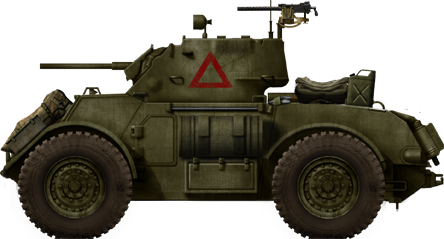
British Staghound in training before D-Day, Spring 1944

Polish Mark I, 2nd Corps Italy summer 1944

Mark I Command, NW Europe 1944
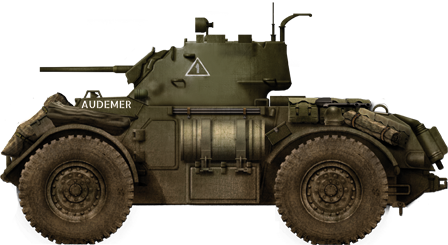
Belgian T17E1, Brigade Piron, Ardennes December 1944
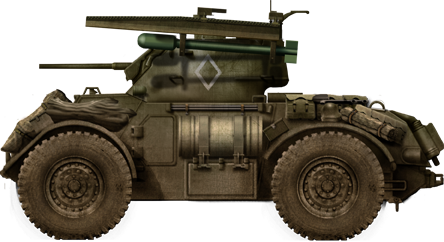
Canadian 12th Manitoba Dragoons T17E1 "Tulip" NEast. France November 1944

Mark II CS of the 12th Manitoba Dragoon in 1945
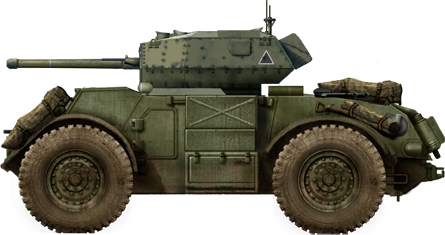
Mark III early type, 1944
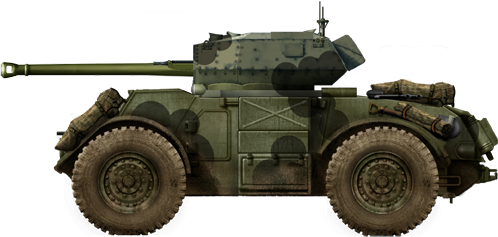
Mark III late type, 1945
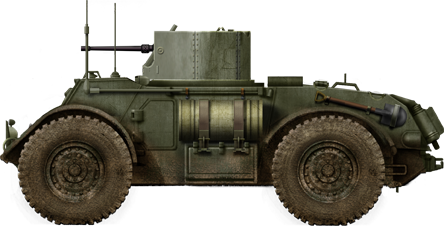
T17E2 AA
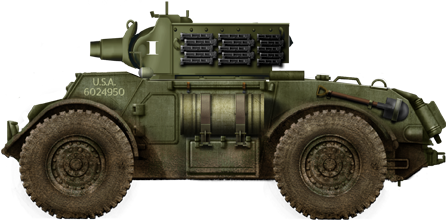
T17E3 Fire support
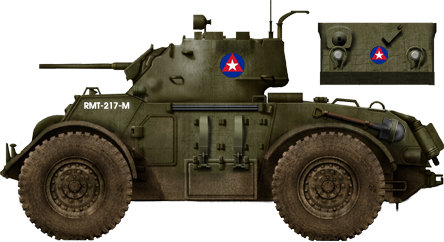
Cuban Staghound Mark I
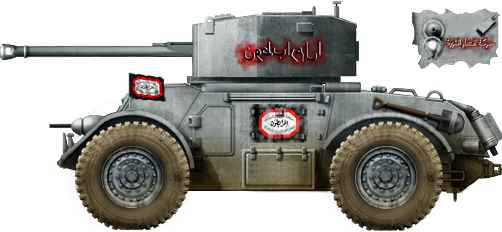
Staghound III with AEC 17 pdr turret, Al-Mourabitoun Militias in Beyrouth, Lebanon 1980s
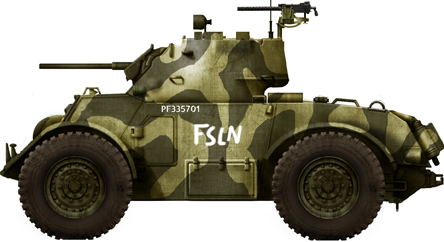
Staghound FLSN Nicaragua 1986
Photo Gallery
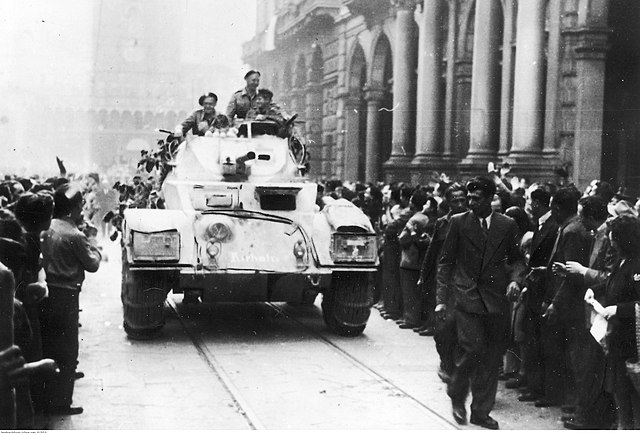
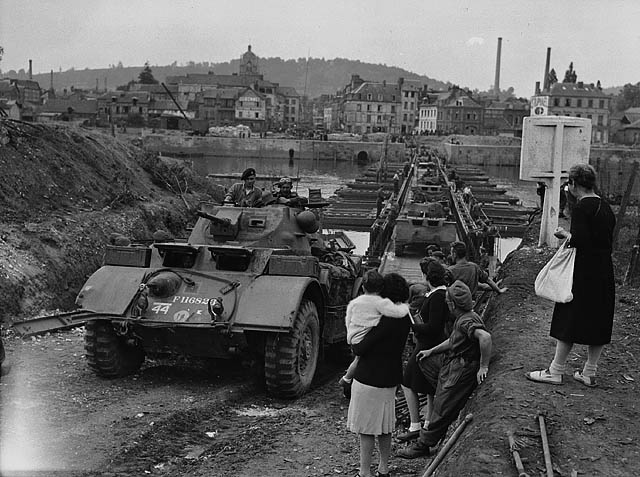
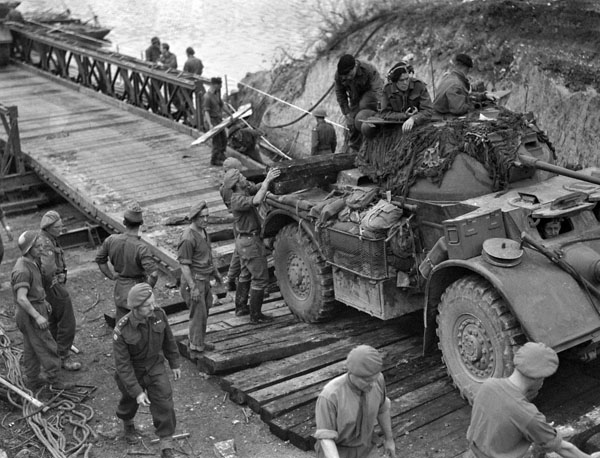
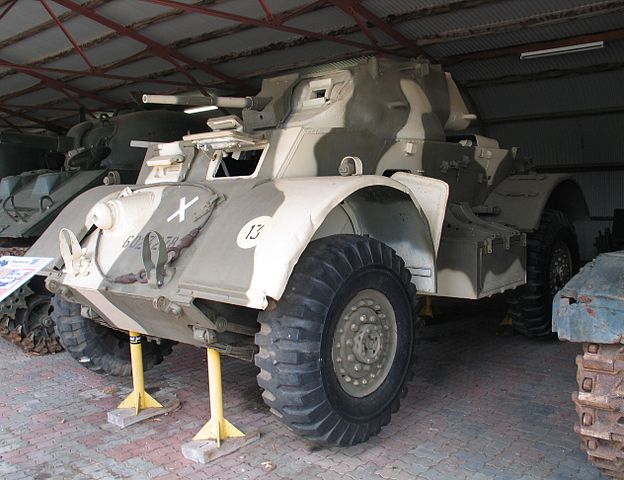
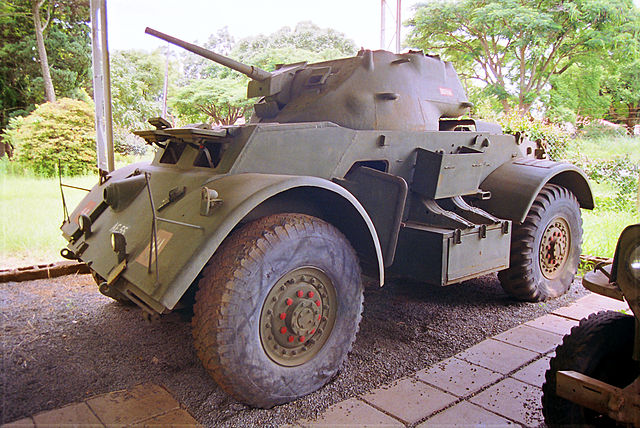
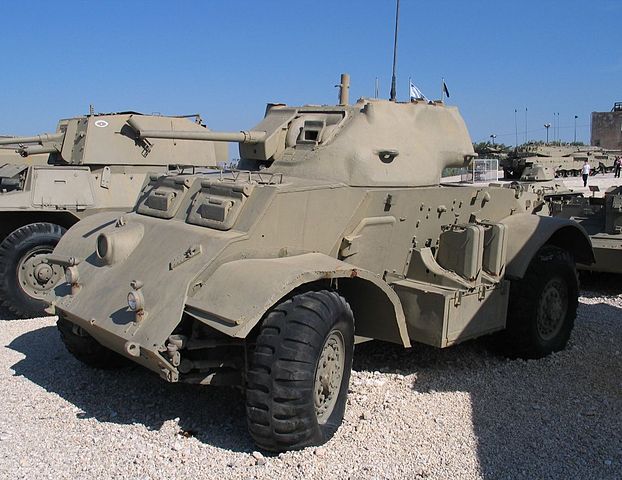

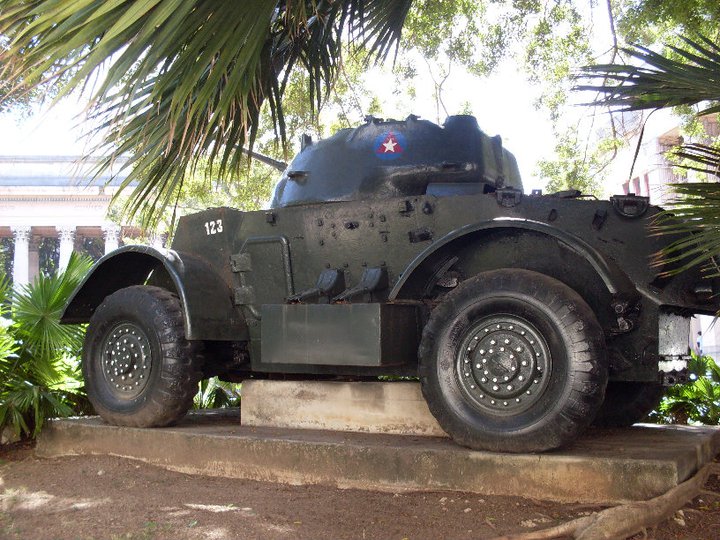
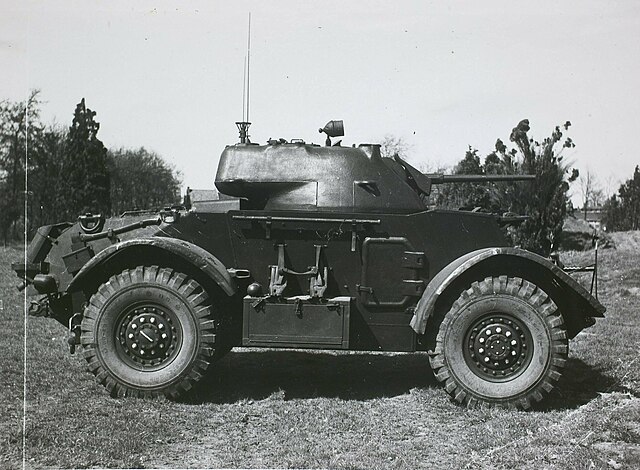
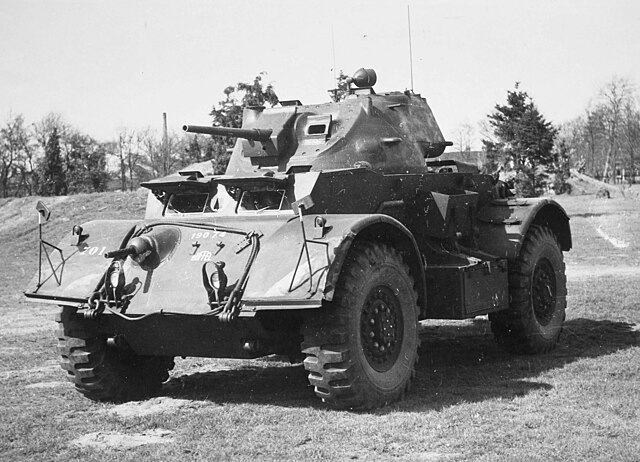


Bridgade piron audemer staghound museum

Late Mark II model





Read More/Src
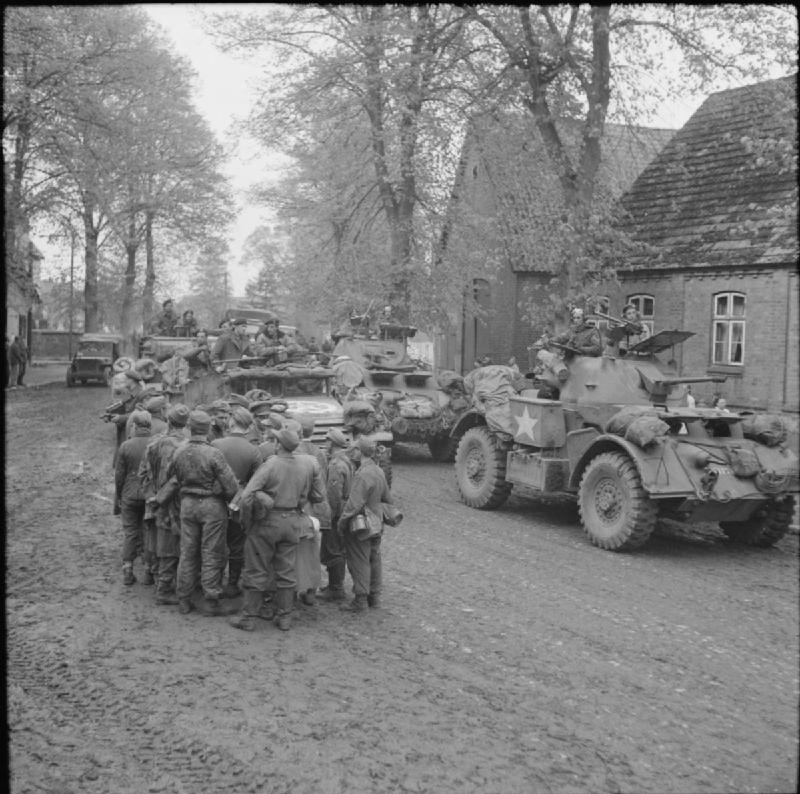
Staghound armoured cars and half-tracks pass German prisoners in Gudow, 2 May 1945.
Books
Doyle, David (2009). The Staghound: A Visual History of the T17E Series Armored Cars... Ampersand Publishing.Laurent Touchard (April–May 2016). "Guerre dans le bush! Les blindés de l'Armée rhodésienne au combat (1964–1979)
Lucy, Roger V. (2007). The Staghound in Canadian Service. Service Publications.
Taylor, Dick (5 October 2007). "The Stag's Story". Military Modelling.
Ludovic Fortin (December 2007 – January 2008). "T17E1 Staghound Armored Car – Le char sur roues". Trucks & Tracks Mag.
Locke, Peter Gerard; Cooke, Peter David Farquharson (1995). Fighting Vehicles and Weapons of Rhodesia 1965–80. P&P Publishing.
Zaloga, Steven J (2002). M8 Greyhound Light Armored Car 1941–91. New Vanguard.
Zaloga, Steven J (2009). Staghound Armored Car, 1942–62. New Vanguard 159.
Links
War Department (1942). TM 9-741 Medium Armored Car T17E1War Department (1943). TM 9-1741C Ordnance Maintenance Chassis, Hull and Turret
D.Haugh Warwheels.com T17E1 index
D.Haugh Warwheels.com T17E1 Mark 2
D.Haugh Warwheels.com T17E1 Mark 3
D.Haugh Warwheels.com T17E2
D.Haugh Warwheels.com T17E3
D.Haugh Warwheels.com AEC Staghound
militarytrader.com
dday-overlord.com
militaryfactory.com
afvdb.50megs.com
Facebook group
commons.wikimedia.org
en.wikipedia.org
panzerserra.blogspot.com
Videos
See also Rita Sobral's walkaroundModel Kits
Bronco kit on scalemates3D
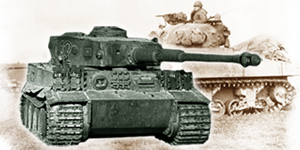
WW2 Tanks




























WW2 tanks posters
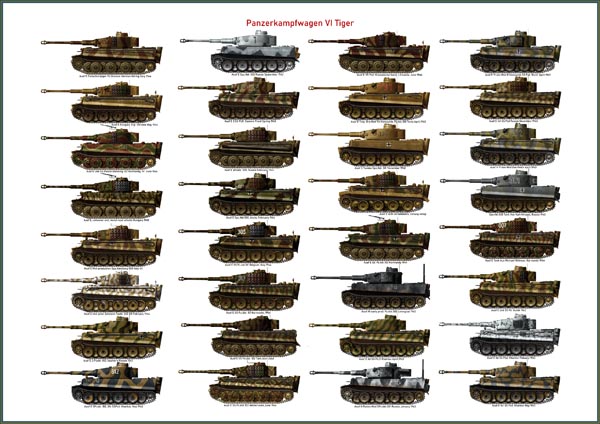
All Tiger tanks liveries.
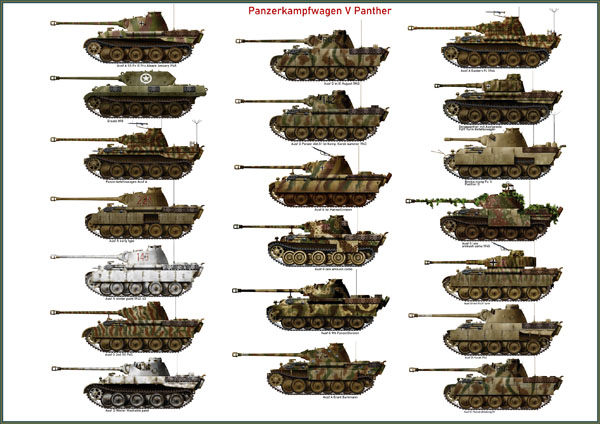
Panther liveries and variants
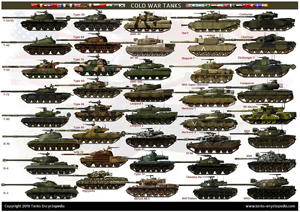
WW2 Armour - All tanks
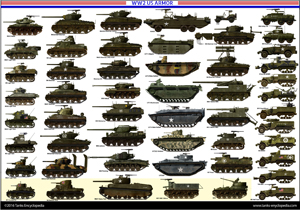

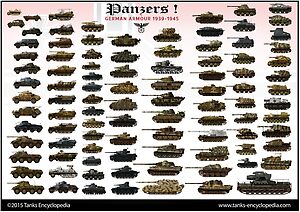








Tanks aces and single tanks series

Find more there
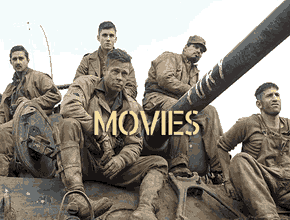
Museums, Movies, Books & Games
The Tanks and Armor in pop culture
Tanks and armored vehicles in general are only really grasped when seen first person: The mass, the scale, it's all there. Explore also the way tanks were covered in the movie industry, in books and in video games.Movies:
Best tanks movie on warhistoryonline.com
On imdb.com
On bestsimilar.com/
miltours.com
liveabout.com/
watchmojo.com
Video Games:
pcgamesn.com
historyhit.com
levvvel.com
vg247.com/best-tank-games
mmobomb.com/
alienwarearena.com
